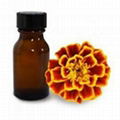| Model: | NH03 |
|---|---|
| Brand: | Nature Herbs |
| Origin: | Made In India |
| Category: | Agriculture & Foods / Gardening / Plant Seeds |
| Label: | Botanical Extracts , Herb Seeds , Essential Oils |
| Price: |
-
|
| Min. Order: | 100 kg |
| Last Online:28 Feb, 2015 |
Caraway (Carum carvi L.) has an economical importance. C. carvi essential oil has been used as a flavouring for liquors and toothpaste, while the seeds have been used as a spice and flavouring. C. carvi essential oils or their pure constituents (such as carvone) showed several biological activities including insecticidal or insect repellent effects, antibacterial and antifungal effects.
The percentages of essential oil available in C. carvi seeds were reported in different studies between 1% (v/w) and 6% (v/w). Caraway seeds contain a several components. Carvone and limonene are the main components available in their oil. Also, their seeds contain trace amounts of other compounds including acetaldehyde, furfural, carveole, pinene, thujone, camphene, phellandrene, etc.
Caraway is best known as a carminative herb, one that prevents flatulence, and promotes appetite and digestion. Caraway seeds are useful in strengthening the functions of the stomach. They relieve flatulence and are useful in flatulent colic, a cup of tea made from caraway seeds gives relief in it. It also helps in increasing milk in nursing mothers. Moreover, when mother uses caraway, her baby won't suffer from flatulence and indigestion. It relieves period pains, also good in case of menopause. When blended in a cream, it can help to fight itching skin, scalp and skin problems such as acne and reduces bruising.
Caraway essential oil is extracted chiefly from seeds using steam distillation. Carvone and limonene are the principal components in caraway oil. The aroma of the oil is mostly dominated by carvone (50 to 85%) and limonene (20 to 30%).These active principles are known to have antioxidant, digestive, carminative and anti-flatulent properties. The oil is used to get rid of mental depression. It is also used in pharmaceuticals as flavoring agent in mouth-wash and gargle preparations. Its uses can also be seen as a fragrance component in toothpastes, soaps, lotions and perfumes.
Description: Caraway is a biennial herb that originated from Asia Minor but is now cultivated in Northern Europe, Africa and Russia. It grows up to 60cm (2 feet) and has soft fern-like leaves, umbels of white/pink flowers and small brown fruit.
Consistency: Light
Blends well with: Basil, Chamomile, Coriander, Frankincense, Ginger, Lavender and Orange.
Common Uses: The chemical constituents of Caraway Essential Oil include anti-histamine, antiseptic, astringent, digestive, disinfectant, expectorant, and vermifuge as its properties. As an herbal expectorant, it helps to clear bronchitis, bronchial asthma and coughs. It is also helpful with sore throats and laryngitis.
History: Also known as Meadow Cumin, Caraway is a very old and well known spice, used as far back as the Stone Age by the evidence in archaeological digs. The Egyptians used it as a flavouring in foods, the Romans in bread-making, and in the Middle Ages it found popularity among the Germans and Austrians in their cooking.
Cautions: Non-toxic and non-sensitizing. It may cause skin irritation if used in high concentration. Avoid use during pregnancy.
Seeds of caraway contain about 5 to 7 % volatile oils that are responsible for its aromatic nature. It also contains stable oils which are about 6.2 to 10.1 % Seed is often chewed to sweeten the breath and avoid acidity. The main constituent of this oil is carvene, a hydrocarbon and oxygenated oil known as carvol. 100 grams of seed of caraway contains about 20 grams of protein, 15 grams of fats and 50 grams of carbohydrate. It also contains 12.5 % fibers, 6 grams of ash, 690 milligrams of calcium, 565 milligrams of phosphorus, 16 milligrams of iron and 5.6 milligram of zinc. It also contains vitamins like vitamin A, B1, B2 and niacin.











